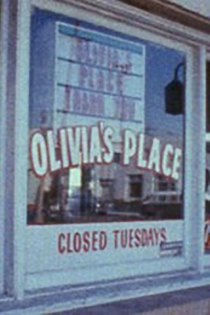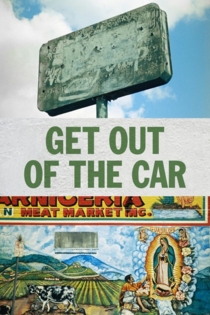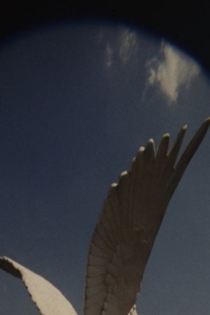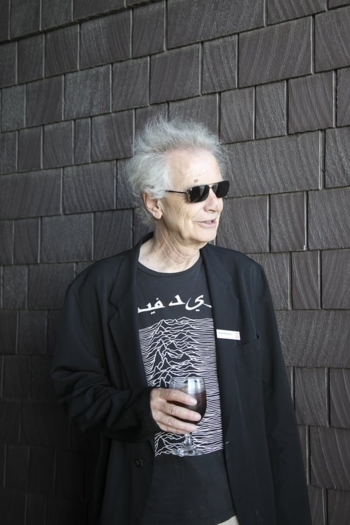
Thom Andersen
2021Los Angeles Plays Itself
Thom Andersen
Encke King
From its distinctive neighborhoods to its architectural homes, Los Angeles has been the backdrop to countless movies. In this dazzling work, Andersen takes viewers on a whirlwind tour through the metropolis' real and cinematic history, investigating the myriad stories and legends that have come to define it, and meticulously, judiciously revealing the real city that lives beneath.
Los Angeles Plays Itself

Eadweard Muybridge, Zoopraxographer
Thom Andersen
Dean Stockwell, Eadweard Muybridge
Thom Andersen's remarkable and sadly neglected hour-long documentary adroitly combines biography, history, film theory, and philosophical reflection. Muybridge's photographic studies of animal locomotion in the 1870s were a major forerunner of movies; even more interesting are his subsequent studies of diverse people, photographed against neutral backgrounds.
Eadweard Muybridge, Zoopraxographer

Reconversão
Thom Andersen
With Reconversão (Reconversion), Thom Andersen opens another fascinating chapter of his ongoing investigation of architectural landscapes, their filmic representation, and their relation to history, by focusing on 17 buildings and projects by the often-controversial Portuguese architect Eduardo Souto de Moura—winner of the 2011 Pritzker Prize. Echoing Dziga Vertov’s concepts and Eadweard Muybridge’s techniques (shooting only one or two frames per second), Andersen masterfully brings forward what makes Souto de Moura an original: the incorporation of the passing of time into architectural designs, positing them within a history fraught with class struggle and societal changes, in a continuum with ruins—from which they may originate, and to which they will return—and with nature—which they frame, and by which they are framed.
Reconversão

The Thoughts That Once We Had
Thom Andersen
One of America’s foremost practitioners of the essay film presents a major new work inspired by the writings of Gilles Deleuze on cinema. Andersen’s The Thoughts That Once We Had is a richly layered journey through cinematic history, masterfully edited as it playfully moves across decades and genres, and suffused at every turn by the renowned filmmaker and critic’s lifelong passion for the movies.
The Thoughts That Once We Had

Melting
Thom Andersen
Melting shows the natural monostructural disintegration of a strawberry sundae, its passage from rigidity to softness, from edibility to waste. The spoon resting on the plate refers to the human presence, which lurks behind the screen, declining to interfere with what transpires. Preserved by the Academy Film Archive in 2009.
Melting
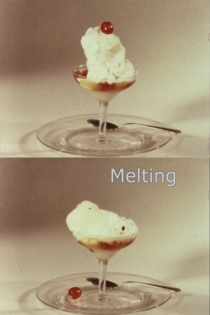
The Tony Longo Trilogy
Thom Andersen
Tony Longo
Although he has been limited to bit parts, the actor Tony Longo is an axiom of American action cinema: the giant who is too soft-hearted for the job. Composed of three short movies, Hey, Asshole!, Adam Kesher and You Fucking Dickhead!, The Tony Longo Trilogy brings together all of the actor’s scenes in three of his most memorable films: The Takeover (Troy Cook, 1995), Living in Peril (Jack Ersgard, 1997) and Mulholland Dr. (David Lynch, 2001).
The Tony Longo Trilogy
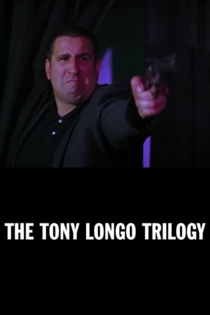
Juke: Passages from the Films of Spencer Williams
Thom Andersen
Thom Andersen (Los Angeles Plays Itself, Red Hollywood) reconsiders the films of Spencer Williams, the pioneering African American screenwriter, director, and actor whose 1940s melodramas centered on sinners and saints—Beale Street mamas and storefront preachers, crime bosses and upwardly striving lawyers and soldiers—who are tempted by jazz and sex and then set back on the glory road to salvation. - MoMA
Juke: Passages from the Films of Spencer Williams

A Train Arrives at the Station
Thom Andersen
“This film was a gift to me. I make no claims for it, nor do I offer any apologies. It comes from work on The Thoughts That Once We Had. There was one shot we had to cut whose loss I particularly regretted. It was a shot of a train pulling into Tokyo Station from Ozu’s The Only Son (1936). So I decided to make a film around this shot, an anthology of train arrivals. It comprises 26 scenes or shots from movies, 1904-2015. It has a simple serial structure: each black & white sequence in the first half rhymes with a color sequence in the second half. Thus the first shot and the final shot show trains arriving at stations in Japan from a low camera height. In the first shot (The Only Son), the train moves toward the right; in the last shot, it moves toward the left. A bullet train has replaced a steam locomotive. So after all these years, I’ve made another structural film, although that was not my original intention.”
A Train Arrives at the Station

Twenty Cigarettes
James Benning
Sompot Chidgasornpongse, Francesca Sloane
Celebrated for his minimal, monumental landscape studies, James Benning turns to the intimacy of the portrait in his latest film, TWENTY CIGARETTES. Referencing Warhol’s screen tests, 1930s Hollywood glamour, and the disappearing cigarette break, the film captures 20 of Benning’s friends (including filmmaker Sharon Lockhart, cultural theorist Dick Hebdige, and book editor Janet Jenkins) satiating their smoke cravings. Each shot’s length is determined by the time it takes each subject to smoke a cigarette, and over the course of the film a dynamic range of personalities emerges out of an array of physical characteristics, distinctive settings, and personal relationships to the camera. (Amy Beste and Jessica Bardsley)
Twenty Cigarettes

Act Without Words
Thom Andersen
Andersen's first extant work as a filmmaker, made as group project while he was a film student at the University of Southern California. A spirited adaptation of Beckett's eponymous mimed play, efficiently compressed to the 300 foot (16mm) class requirement, Act Without Words boasts an uncredited Lester Young soundtrack that points towards Andersen's interest in American musical traditions.
Act Without Words

--- -------- (Rock and Roll Movie)
Thom Andersen, Malcolm Brodwick
A documentary about rock 'n' roll. The Canned Heat, City Lights, Seeds of Time, LA Tymes, Llyn Foulkes, Charlie Watts, Chris & Craig, Duke of Earl, Seeburg, Wurlitzer, The Trip, The Lynch Bldg., Top's, Pandora's Box, Maverick's Flat, someone's backyard. Riot in cell block number nine, riot on Sunset Strip. Hotrod, coin slot, go cart, bomp club. Hound Dog Man, King Creole. Kim Weston, The Shangri-Las, The Supremes, Earl - Jean. The Rainbows, Wolfman Jack, Ernie Bushmiller, Jimmy Reed, Ray Charles, The Who, The Coasters. Standing at the crossroads of love. Fats Domino, Chuck Berry, John Cale, Screaming Jay Hawkins, Howlin Wolf, James Brown - The King. Wax reclamation. Frankie Avalon, The Beatles, The Yardbirds, Great Balls of Fire, an early clue to a new direction. Standing, walking, jumping, singing, surfing. Radio, jukebox, scopitone, pinball, poolhall. Mick Jagger/Earth Angel. Preserved by the Academy Film Archive in 2008.
--- -------- (Rock and Roll Movie)

Olivia's Place
Thom Andersen
Olivia may have felt no need to change, but the world around her was not bound by such an impractical sentiment. Olivia’s Place is gone. The site where it used to stand is now a sort of plaza between two large old wood frame houses that were moved to their present location from elsewhere in the city. One of these houses is occupied by a restaurant, the other is occupied by the California Heritage Museum. (Morgan Fisher) Preserved by the Academy Film Archive in 2008.
Olivia's Place
